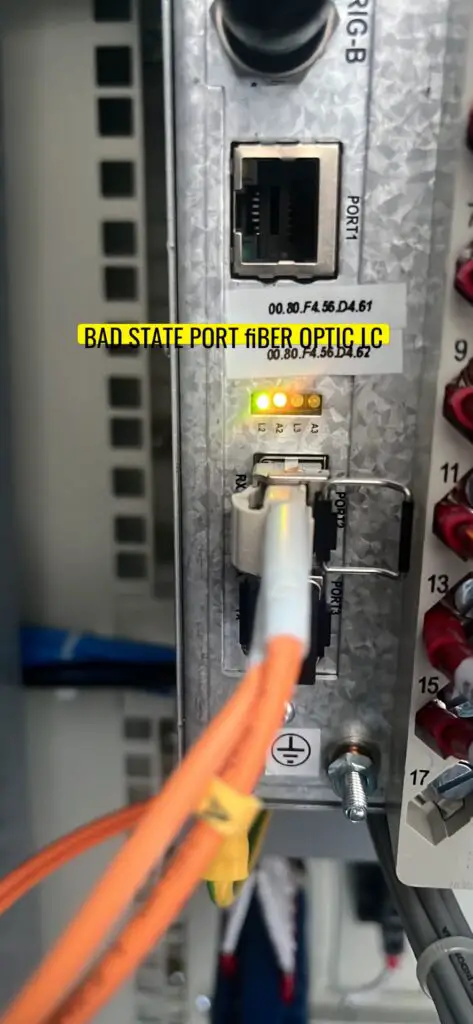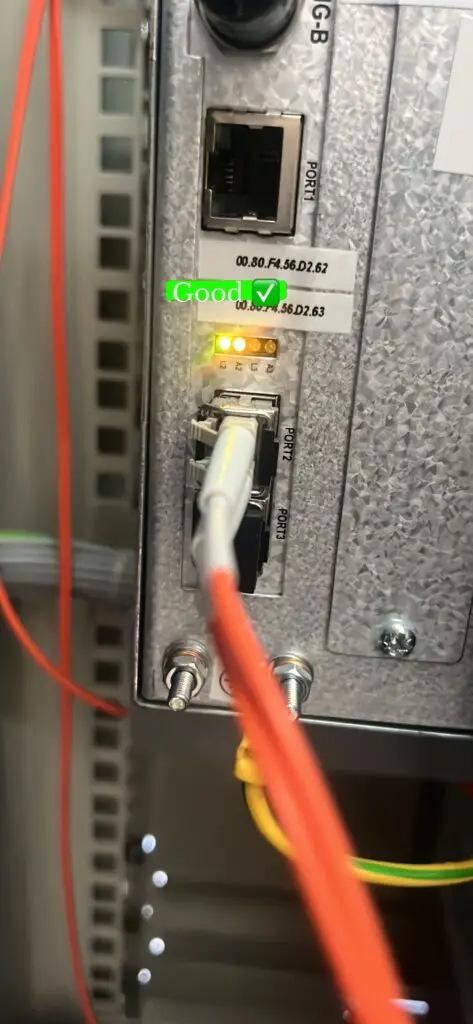
Bad state installation of fiber optic Single Mode IED
A bad state installation of fiber optic refers to a situation where the installation of fiber optic cables is not performed properly, resulting in poor performance or complete failure of the fiber optic network.
Some common issues that can arise from a bad-state installation of fiber optic include:
- Fiber breakage or damage: Improper handling of fiber optic cables during installation can lead to physical damage or breakage of the fiber. This can cause a complete failure of the fiber optic network or a significant loss in signal strength.
- Connector issues: Poorly installed connectors can result in signal loss or complete failure of the fiber optic network. Connector issues may arise due to improper cleaning or polishing, or the use of low-quality connectors.
- Misalignment: Misalignment of fiber optic cables during installation can result in significant signal loss or complete failure of the network. Misalignment can occur due to improper routing or securing of the cables.
- Excessive bending or stretching: Excessive bending or stretching of fiber optic cables during installation can result in signal loss or complete failure of the network. Fiber optic cables are sensitive to bending and stretching, and proper handling is crucial to ensure their optimal performance.
To avoid these issues, it is important to ensure that fiber optic installation is performed by experienced professionals who follow industry-standard practices and guidelines. Regular inspection and maintenance of fiber optic networks can also help identify and address any issues before they result in significant downtime or loss of service.
Good state installation of fiber optic Single Mode IED
A good state installation of fiber optic Single Mode IED (Intelligent Electronic Device) involves following industry-standard practices and guidelines to ensure optimal performance and reliability of the fiber optic network. Here are some key steps to follow for a good state installation of fiber optic Single Mode IED:
- Proper cable routing and securing: The fiber optic cables should be routed and secured properly to avoid excessive bending or stretching that can cause signal loss or complete failure of the network. Cables should be routed in a way that minimizes stress on the cables and allows for easy access during maintenance.
- Use of high-quality cables and connectors: High-quality fiber optic cables and connectors should be used to ensure optimal performance and reliability of the network. This includes using cables with appropriate coating and jacketing materials to withstand environmental factors and proper cleaning and polishing of connectors to minimize signal loss.
- Verification of fiber optic links: Once the fiber optic network has been installed, it should be verified to ensure proper operation and performance. This includes verifying the continuity of the fibers, the quality of the signals, and the power levels.
- Documentation and labeling: It is important to document and label the fiber optic network to enable easy identification and troubleshooting of any issues that may arise. This includes documenting the location of all fiber optic cables, labeling connectors and splices, and maintaining a record of all maintenance and repairs.
Following these steps can help ensure a good state installation of fiber optic Single Mode IED, which can lead to improved performance, reliability, and uptime of the fiber optic network.


You must be logged in to post a comment.